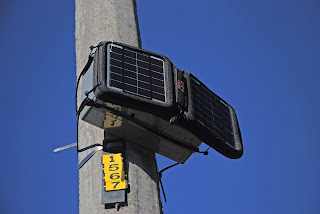Our first air quality map

One of the main things we wanted to show with CONA is that air quality is not the same everywhere - even across a small town like Rangiora. Until now information about Rangiora's air quality came from only one monitoring site - the one run by regulator Environment Canterbury (ECan) in the centre of town. It reports levels of particulate matter (PM) every hour. You can find this data at www.lawa.org.nz , or download it from ECan ( data.ecan.govt.nz ). Now, however, for the first time we can combine data from the 16 ODINs we had installed at various locations around the town to produce a map of average particle levels during the month of August 2016. Map of average PM2.5 levels across Rangiora in August 2016, based on interpolation of ODIN data (green = low, red = high) Now you've seen the map, here comes the disclaimers, how we did it and what it means. Firstly, this map should be treated as preliminary. With further analysis it might change slightly. It is created by firstly av


